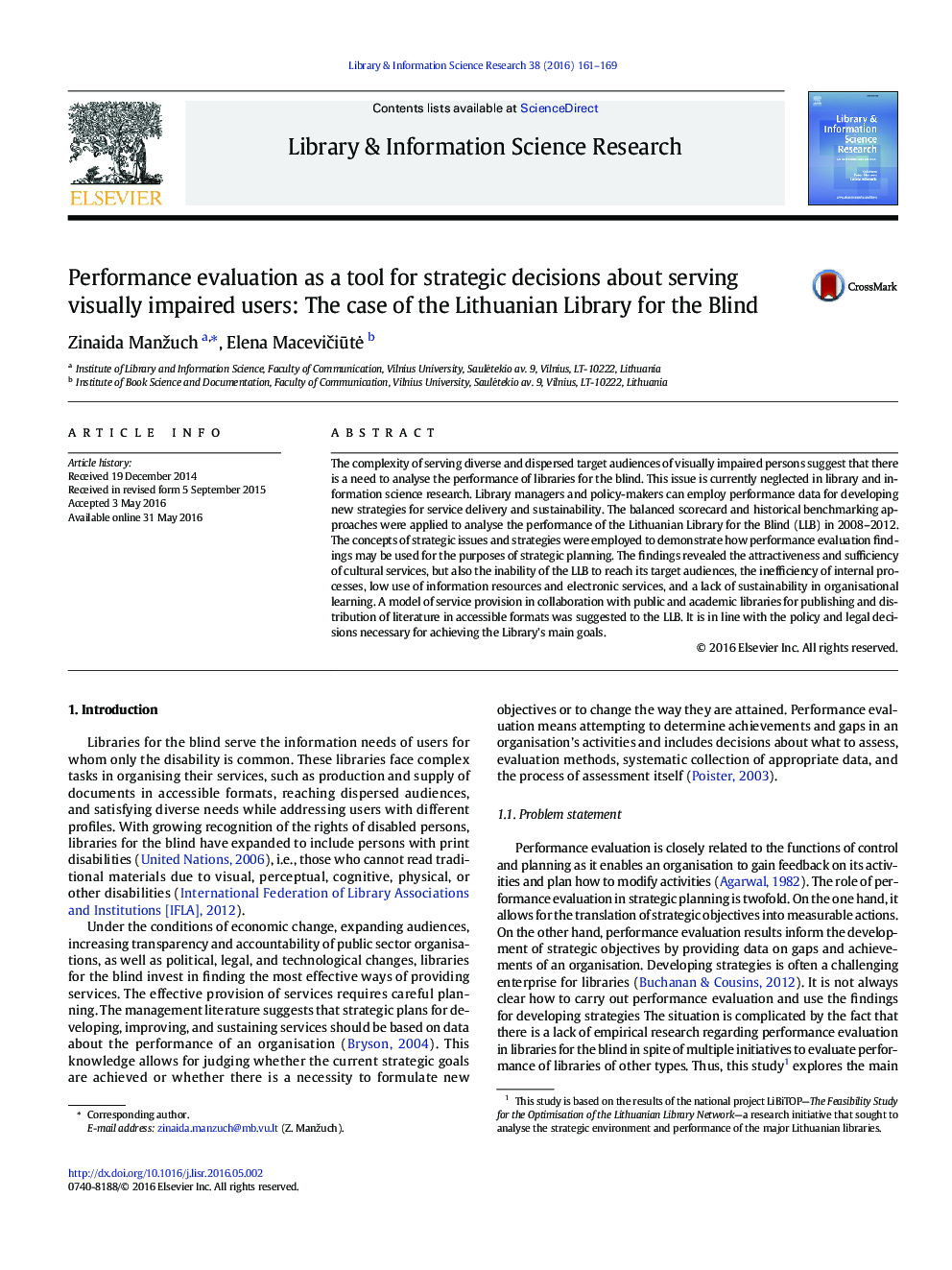| Article ID | Journal | Published Year | Pages | File Type |
|---|---|---|---|---|
| 1099165 | Library & Information Science Research | 2016 | 9 Pages |
•Trends in library access for the blind are highlighted in the setting of the Lithuanian Library for the Blind.•Specific performance indicators targeted to libraries are applied in evaluation.•Cultural services are important and attractive for visually impaired users.•Information provision for visually-impaired users is costly and inefficient.•Collaboration among libraries can improve availability and quality of services.
The complexity of serving diverse and dispersed target audiences of visually impaired persons suggest that there is a need to analyse the performance of libraries for the blind. This issue is currently neglected in library and information science research. Library managers and policy-makers can employ performance data for developing new strategies for service delivery and sustainability. The balanced scorecard and historical benchmarking approaches were applied to analyse the performance of the Lithuanian Library for the Blind (LLB) in 2008–2012. The concepts of strategic issues and strategies were employed to demonstrate how performance evaluation findings may be used for the purposes of strategic planning. The findings revealed the attractiveness and sufficiency of cultural services, but also the inability of the LLB to reach its target audiences, the inefficiency of internal processes, low use of information resources and electronic services, and a lack of sustainability in organisational learning. A model of service provision in collaboration with public and academic libraries for publishing and distribution of literature in accessible formats was suggested to the LLB. It is in line with the policy and legal decisions necessary for achieving the Library's main goals.
